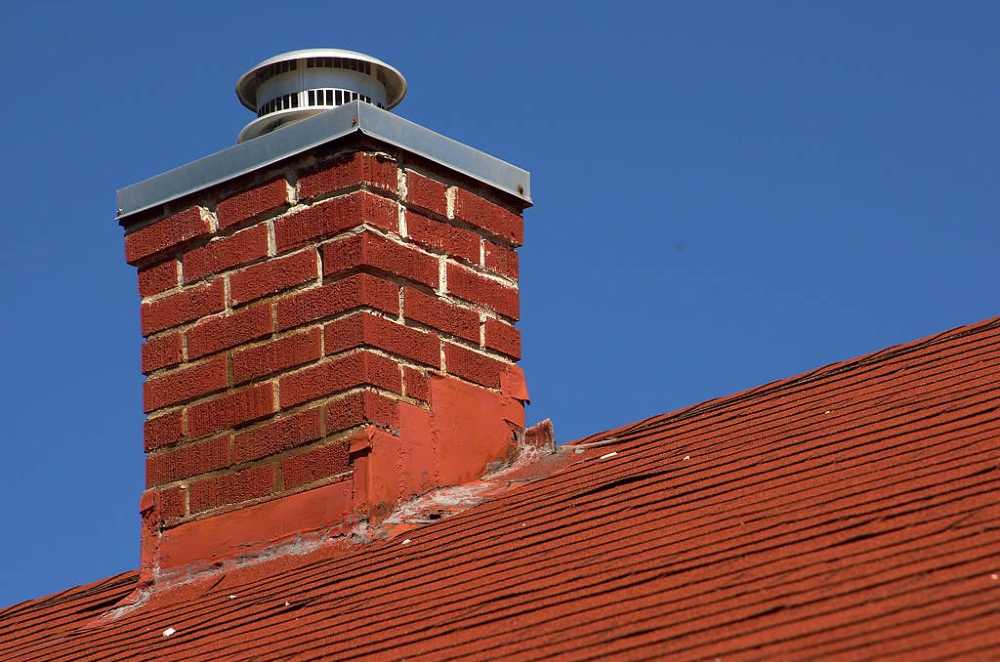Water damage from a chimney leak is usually a slow process. A chimney leak will weaken your roof, wooden beams, and other materials near the chimney. Depending on the situation, chimney damage can allow a significant amount of water into your home. This can cause water to pour through your ceiling or leak through walls. We look at how a chimney leak causes water damage and offer a few tips on how to prevent them.
What Are the Most Common Causes of a Chimney Leak?
Whether you have a fireplace or just an exhaust chimney, they are likely to leak in most of the same places. Here are the most common places your chimney will leak.
- Chimney Cap – The cap is the top cover that keeps rain, snow, and debris from entering your chimney. It’s usually a metal top with a mesh screen around it that covers the top of your chimney.
- Chimney Crown – The crown is brick or masonry on top of your chimney. The cap usually sits on top of the crown.
- Masonry – The masonry is the brick or stonework that comprises the exterior portion of your chimney.
- Mortar – The mortar is a mixture of cement and sand that holds your chimney masonry together.
- Roof Flashing – The roof flashing is a strip of metal that covers the joint where the chimney and your roof connect. The metal is usually glued or tarred down, with a bead of roofing tar forming a watertight seal.
- Flue Lining – The flue lining is the inside lining of your chimney. Made from ceramic, clay, or metal, it protects the chimney from smoke and exhaust. Some clay or ceramic liners are also covered in pitch to block moisture.
What Are the Signs of Chimney Water Damage?
Inspect your chimney, attic, crawl space, or basement at least twice a year for signs of wear that could result in water damage.
- Damaged Cap Or Crown – Damage to the cap or crown can allow rain and snow to enter your chimney. Depending on the condition of your flue lining, the water can then leak through the chimney walls into your home. Repair or replace the cap or crown if they are damaged.
- Missing Mortar – Missing mortar on the outside of your chimney will let water in. From there, it can soak into attic beams or drip down inside. It can even pool in the ash pit at the bottom of the chimney stack and seep into your basement or crawl space.
- Water Stains or Spots In Attic – Check the wooden beams in your attic for water stains or spots around your chimney. This is usually an indication that your flashing needs to be repaired or replaced. You can seal small gaps with more roofing tar, but replace rusted or damaged flashing.
- Efflorescence On Masonry – Efflorescence is a sparkly, white powder that forms as water seeps through masonry. Check all visible masonry to see if there are leaks. You can usually see the brickwork in the attic, crawl space, and basement. Also, look for efflorescence or water spots around the ash box. This usually means water is pooing there.
How to Repair Water Damage From Chimney Leaks
In addition to making repairs to your chimney, you also need to clean up the water damage as well. For small leaks or areas less than a few square feet, you can do your own water damage cleanup.
However, you may consider hiring a water damage restoration company for larger leaks or if the damage impacted a sizable area of your home. Whether you do the work yourself or hire a contractor, the process is the same.
- Water Cleanup – Cleanup and extract the water from the affected area. For large amounts of water, use a submersible pump. A wet-dry vacuum or absorbent towels work best if there is less than an inch of water.
- Damage Removal – Remove damaged materials. This includes cutting away soaked drywall, throwing out saturated personal items, and removing damaged furniture or cabinets.
- Structural Drying – Position fans and dehumidifiers through the area to dry the structure of your home. Ideally, use commercial-grade air movers whenever possible.
- Disinfection – Disinfect the area once it’s dry to kill mold and bacteria that may have grown. Use bleach or a chemical disinfectant for the best results.
- Deodorization – If the area smells because of the water damage, air it out as best as possible. For added deodorizing power, sprinkle baking soda in the area and allow it to sit for half an hour. Then vacuum it up and repeat if necessary.
- Reconstruction – If you had to remove damaged materials, you will need to rebuild the area. Install new carpeting, drywall, cabinets, or other materials depending on the type of damage you have.
Need help with chimney water damage? Call 1-888-443-3110 now for a fast, free quote on reliable water damage cleanup.





